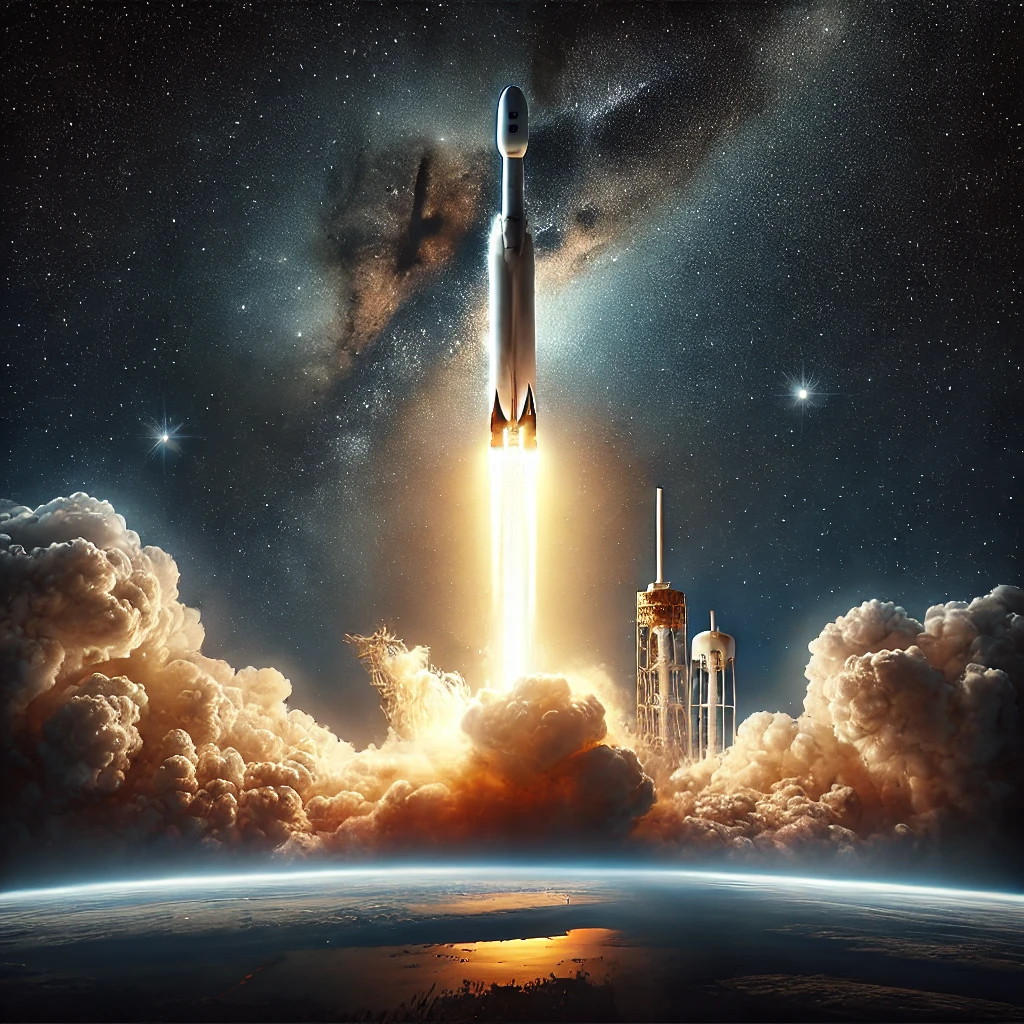The recent successful launch of NASA’s SpaceX Crew-10 mission represents another milestone in the ongoing partnership between America’s space agency and the private aerospace manufacturer. On March 14, 2025, at precisely 7:03 p.m. EDT, the Falcon 9 rocket lifted off from Launch Complex 39A at Kennedy Space Center in Florida, carrying four astronauts to the International Space Station (ISS). This launch not only continues the regular rotation of crew members to the orbiting laboratory but also further cements the revolutionary collaboration that has transformed access to space. As we witness these increasingly routine yet remarkable achievements, it’s worth exploring how the NASA SpaceX launch partnership has evolved, the technology driving these missions, and what the future holds for this dynamic relationship in expanding humanity’s presence beyond Earth.
The Historic NASA-SpaceX Partnership
The collaboration between NASA and SpaceX represents one of the most successful public-private partnerships in the history of space exploration. This relationship formally began in the early 2000s but gained significant momentum in 2008 when NASA awarded SpaceX its first major contract under the Commercial Orbital Transportation Services (COTS) program. This initial agreement tasked SpaceX with developing capabilities to deliver cargo to the International Space Station, a challenge the company met by creating the Falcon 9 rocket and Dragon spacecraft. The partnership represented a fundamental shift in how NASA approached space missions, moving from the traditional contractor model to one where private companies developed their own spacecraft with NASA as a customer.
The evolution of this partnership reached a crucial milestone in 2014 when NASA selected SpaceX as one of two companies to develop systems for transporting U.S. astronauts to and from the ISS under the Commercial Crew Program. This $2.6 billion contract challenged SpaceX to adapt its Dragon spacecraft for human transport and certify it to NASA’s rigorous human spaceflight standards by 2017. Though the timeline eventually extended, the investment paid off tremendously, ending America’s reliance on Russian Soyuz spacecraft for ISS access following the Space Shuttle’s retirement in 2011. This approach allowed NASA to focus its resources on deep space exploration while leveraging private industry’s innovation and cost-efficiency for routine access to low Earth orbit.
The partnership fundamentally transformed space economics by introducing the concept of reusability on a large scale. Prior to SpaceX’s innovations, space launch vehicles were predominantly single-use, with the enormous expense of each rocket essentially discarded after a single mission. Elon Musk, who founded SpaceX in 2002 with the vision of reducing space launch costs to enable eventual Mars colonization, drove the development of reusable rocket technology that has drastically reduced launch costs. This economic transformation has benefited NASA’s budget while creating an entirely new paradigm for commercial space operations, enabling more frequent launches and more ambitious missions than were previously financially feasible.
Beyond the practical benefits, the NASA SpaceX launch partnership has reinvigorated public interest in space exploration. The dramatic visual of Falcon 9 boosters returning to land vertically, either on drone ships at sea or landing pads on land, has captured imaginations worldwide and made rocket launches popular viewing events again. These technological achievements, combined with SpaceX’s savvy use of social media and live broadcasting of launches, have connected a new generation to the excitement of space exploration. The success of this partnership has also inspired numerous other commercial space ventures, creating a vibrant ecosystem of companies pursuing various aspects of space technology and exploration.
Recent Milestone: NASA’s SpaceX Crew-10 Mission
The NASA SpaceX Crew-10 mission, which lifted off on March 14, 2025, at 7:03 p.m. EDT, represents the tenth operational crew rotation mission to the International Space Station as part of the Commercial Crew Program. The mission faced initial challenges when a previously scheduled launch on March 12 was scrubbed due to a hydraulic malfunction involving a clamp arm that secures the rocket before launch. Additionally, uncertain weather conditions along the launch trajectory contributed to the decision to reschedule for Friday, March 14, when the crew finally began their journey to the orbiting laboratory with a 95% favorable weather forecast.
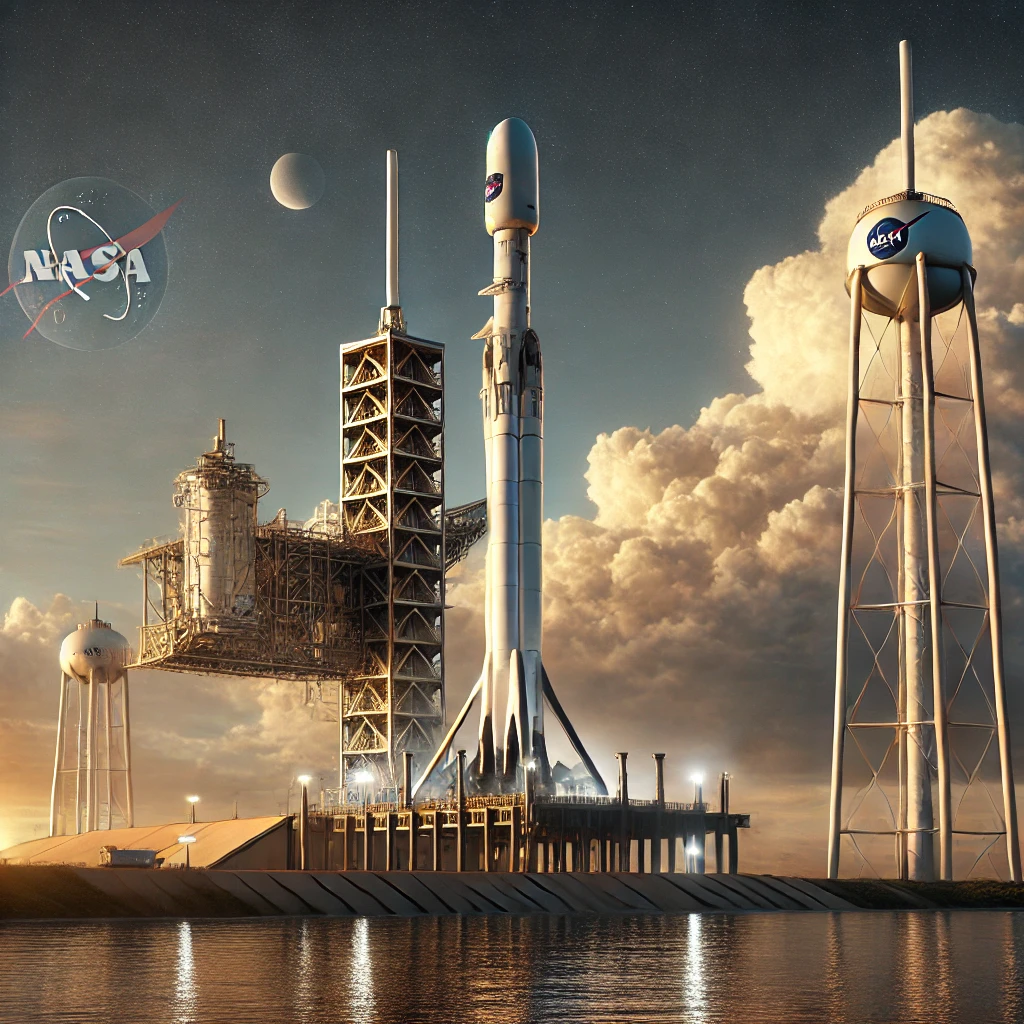
The diverse and highly skilled Crew-10 team consists of NASA astronaut Anne McClain as commander and Nichole Ayers as pilot, accompanied by mission specialists JAXA (Japan Aerospace Exploration Agency) astronaut Takuya Onishi and Roscosmos cosmonaut Kirill Peskov. This international crew composition highlights the continued global collaboration in space exploration, even as geopolitical tensions exist on Earth. Commander McClain, a lieutenant colonel in the U.S. Army and a qualified helicopter pilot with over 2,000 flight hours, brings considerable experience to the mission, while Ayers, a U.S. Air Force colonel, serves as pilot on her first spaceflight, representing the increasing diversity among astronauts in the space program.
During the launch sequence, the crew experienced forces of up to 2g as the Falcon 9 rocket proceeded through a rapid succession of events. The nine Merlin engines on the rocket’s first stage consumed approximately one million pounds of propellant in just three minutes, generating tremendous thrust to carry the Dragon spacecraft into orbit. Following separation from the second stage, the Dragon spacecraft began its autonomous journey to the International Space Station, with docking expected approximately 28.5 hours after launch at 11:30 p.m. EDT on Saturday, March 15. Throughout this transit, the spacecraft traveled at approximately 17,000 mph while orbiting Earth, demonstrating the incredible velocities required for orbital operations.
This particular mission has garnered additional attention because it will finally facilitate the return of NASA astronauts Suni Williams and Butch Wilmore, whose originally brief visit to the space station last June unexpectedly extended to over nine months. Their extended stay resulted from delays with Boeing’s Starliner spacecraft, highlighting the importance of having multiple crew transportation options to ensure access to the ISS. The Crew-10 mission demonstrates the maturity and reliability of the NASA SpaceX launch system, which has now become the backbone of America’s human spaceflight capability to low Earth orbit, providing regular and dependable access to the International Space Station.
The Evolution of SpaceX Launch Vehicles
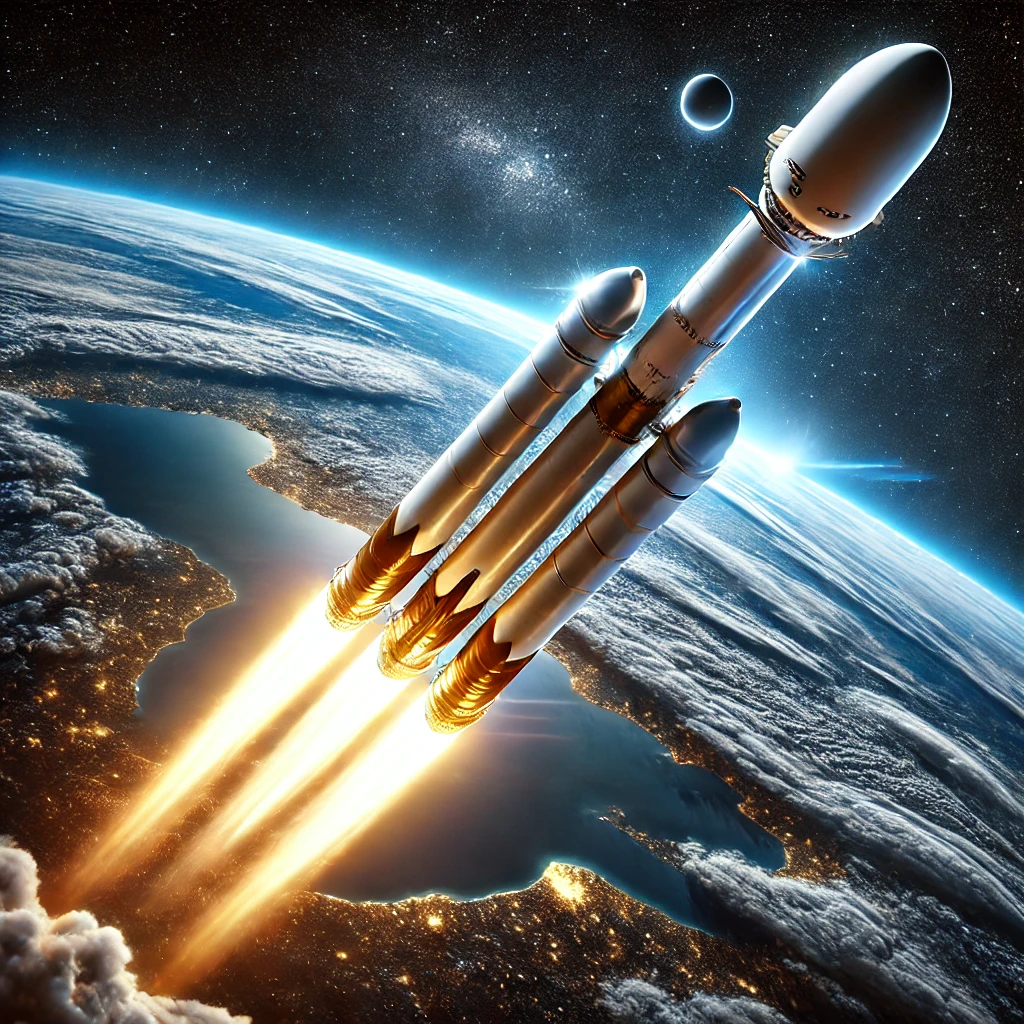
The journey of SpaceX’s launch vehicles began with the Falcon 1, a pioneering rocket that achieved a significant milestone in 2008 when it became the first privately developed liquid-fuel rocket to reach Earth orbit. This achievement came after three failed launch attempts, demonstrating the persistence and engineering capability that would become hallmarks of the company. The Falcon 1 served as a crucial proving ground for SpaceX’s rocket design philosophy and manufacturing processes, establishing the foundation for more ambitious vehicles to follow. Though modest by today’s standards, this initial success provided essential validation of SpaceX’s approach and secured the confidence needed to pursue larger contracts and more challenging missions.
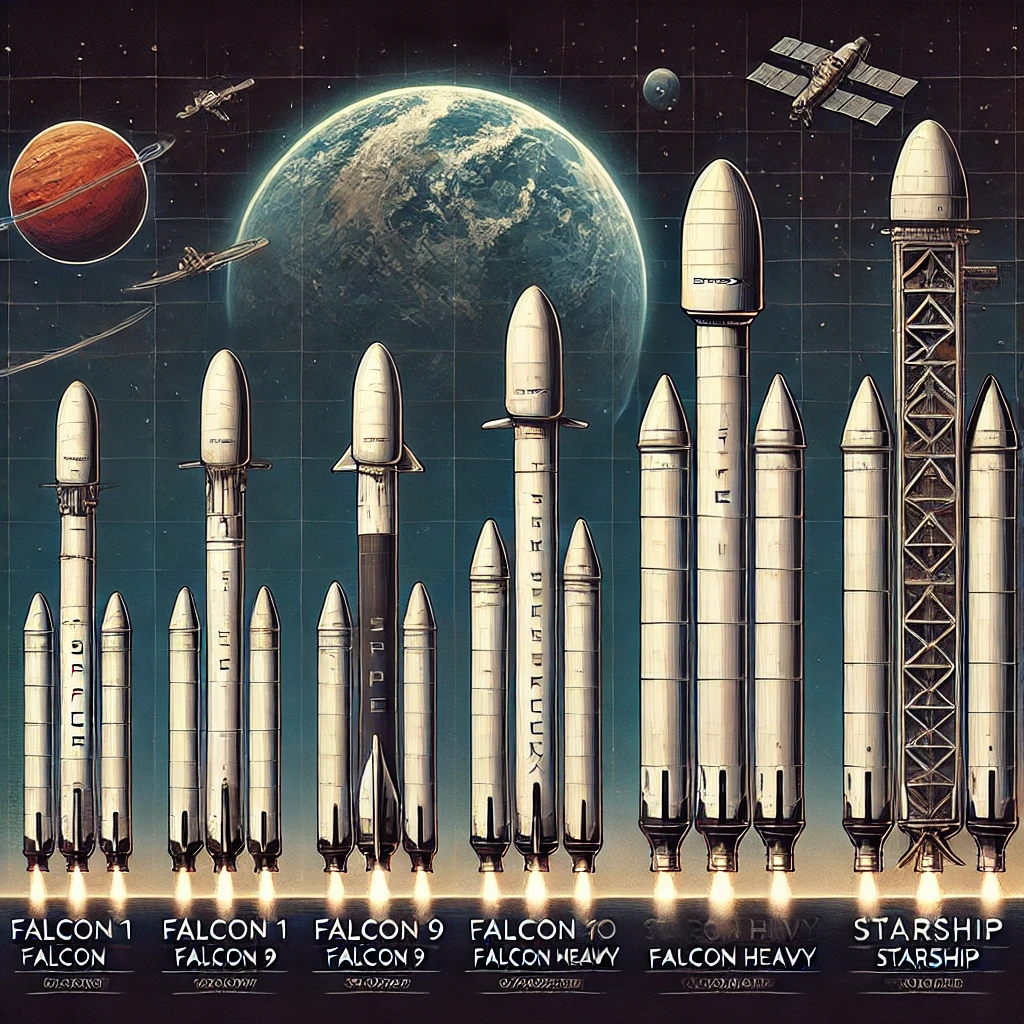
Following the success of Falcon 1, SpaceX shifted its focus to developing the much larger and more capable Falcon 9 rocket. This vehicle, named for its nine first-stage Merlin engines, has evolved through several iterations to become one of the most reliable and cost-effective launch systems in the world. The true breakthrough came on December 21, 2015, when a Falcon 9 successfully delivered eleven communications satellites to orbit and then returned its first stage to Landing Zone 1 at Cape Canaveral—the first-ever landing of an orbital-class rocket. This achievement was soon followed by successful landings on autonomous drone ships positioned in the ocean, allowing for recovery even on missions requiring higher velocities that precluded return to the launch site.
The Falcon Heavy, which made its debut flight on February 7, 2018, represented another leap forward in SpaceX’s launch capabilities. Comprised of three Falcon 9 boosters strapped together, the Falcon Heavy generates more than five million pounds of thrust at liftoff—equivalent to approximately eighteen 747 aircraft at full power. This immense capability allows the rocket to lift the equivalent of a fully loaded Boeing 737 jetliner, complete with passengers, luggage, and fuel, to orbit. The maiden launch of Falcon Heavy captured global attention not only for its technological achievement but also for its payload—Elon Musk’s personal Tesla Roadster with a spacesuit-clad mannequin named “Starman” in the driver’s seat, now orbiting the sun on an elliptical path that extends beyond Mars.
While the Falcon family of rockets has established SpaceX as a dominant force in the launch industry, the company’s most ambitious vehicle is yet to come to full fruition. Starship, currently under development, is designed to be the largest and most powerful rocket ever built, with the capability to carry humans to Mars and other destinations in the solar system. Throughout 2024 and early 2025, SpaceX conducted several test flights of Starship, with the seventh test flight occurring on January 16, 2025. This test included the first Block 2 Ship and carried a demonstration payload, a Starlink V3 simulator. While the test resulted in the second successful catch of the Super Heavy booster, contact with the upper stage was lost approximately 8.5 minutes after launch, resulting in the spacecraft’s destruction over the Atlantic Ocean. Most recently, on March 7, 2025, another test flight was disrupted by an oxygen leak, demonstrating the ongoing challenges of developing such advanced technology.
The Dragon Spacecraft: A New Era for Human Spaceflight
The Dragon spacecraft represents a revolutionary approach to human spaceflight, combining cutting-edge technology with practical reusability to transform access to space. Initial development of Dragon began as part of NASA’s Commercial Orbital Transportation Services (COTS) program, with the cargo variant making history in 2012 when it became the first private spacecraft to deliver supplies to the International Space Station. This achievement marked a turning point in space operations, demonstrating that private companies could successfully develop and operate vehicles capable of complex orbital rendezvous and docking procedures previously performed only by government space agencies. The success of the cargo Dragon established the foundation upon which the crew variant would later be built, proving the fundamental design concepts while delivering essential supplies to the orbiting laboratory.
The transition from cargo to crew transportation required significant enhancements to the Dragon spacecraft, resulting in the development of the Dragon 2 or Crew Dragon. This variant incorporated sophisticated life support systems, emergency escape capabilities, and intuitive controls that allow astronauts to manually pilot the vehicle if necessary. The spacecraft underwent rigorous testing to meet NASA’s exacting human spaceflight certification standards, including a successful Pad Abort Test in May 2015 and an in-flight abort test in January 2020. These tests verified the spacecraft’s ability to rapidly carry astronauts to safety in the event of an emergency during launch, a critical capability for any human-rated vehicle.
The interior of the Crew Dragon reflects a dramatic departure from traditional spacecraft design, featuring sleek touchscreen interfaces and minimalist aesthetic that more closely resembles a luxury vehicle than the complex control panels of earlier spacecraft. The capsule accommodates up to seven passengers, though typical NASA missions carry four astronauts to maximize the balance between crew transport and cargo capacity. Crew Dragon also features an environmental control and life support system that maintains appropriate temperature, humidity, and atmospheric composition while removing carbon dioxide and other contaminants. The spacecraft can operate autonomously through all phases of its mission while still providing manual control options to the crew, representing a sophisticated balance between automation and human involvement.
In May 2020, Dragon made history again when the Demo-2 mission carried NASA astronauts Bob Behnken and Doug Hurley to the International Space Station, marking the first time astronauts launched from American soil since the retirement of the Space Shuttle in 2011. This achievement restored U.S. human launch capability and began a new era of commercial human spaceflight. Since then, Dragon has conducted multiple crewed missions to the ISS, including both NASA and private astronaut missions, demonstrating its versatility and reliability as a human spaceflight system. The spacecraft’s reusability has also proven highly successful, with capsules being refurbished and reflown multiple times, further reducing the cost of access to space while maintaining the highest safety standards.
Impact on International Space Station Operations
The NASA SpaceX launch partnership has fundamentally transformed operations at the International Space Station, providing consistent and reliable access that ensures continuity of research and maintenance activities. Prior to the Commercial Crew Program, NASA relied exclusively on Russian Soyuz spacecraft for crew transportation following the Space Shuttle’s retirement, incurring significant costs and operational constraints. The introduction of regular Dragon flights has established a more diversified and resilient transportation system that enhances the station’s operational flexibility. This improved access has enabled more frequent crew rotations, allowing for greater scientific productivity and more efficient utilization of the orbital laboratory’s limited resources and specialized facilities.
The increased launch cadence made possible by SpaceX’s efficient manufacturing and operations has enabled a more robust cargo delivery schedule to the space station. This enhanced logistics capability ensures that scientific experiments receive timely deliveries of new equipment and samples, while also maintaining adequate supplies of food, water, and other essentials for the crew. Additionally, Dragon’s significant downmass capability—the ability to return items to Earth—has proven particularly valuable for scientific research, allowing for the return of experimental samples that require analysis in Earth-based laboratories. This two-way transport capability has expanded the types of research that can be conducted on the ISS, particularly in fields like biology and materials science where sample return is essential.
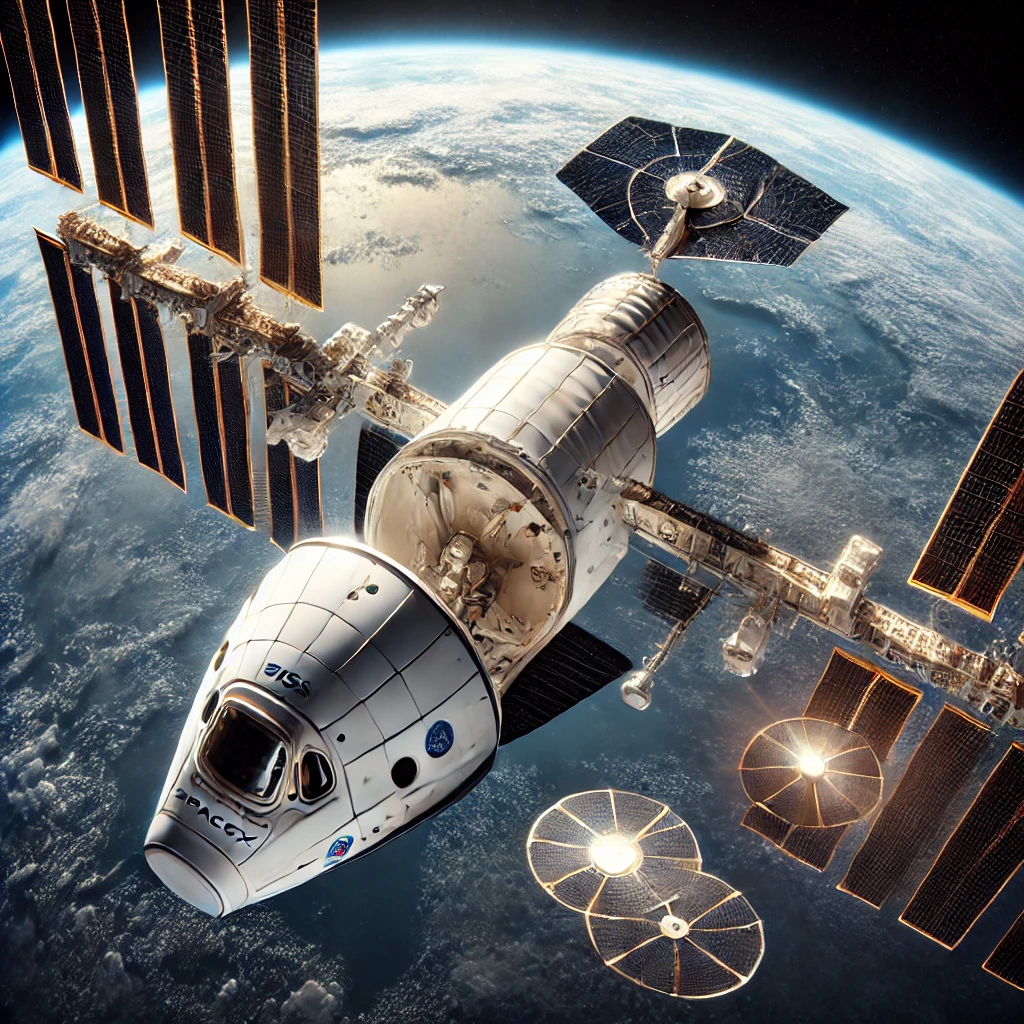
Beyond the practical aspects of transportation, the NASA SpaceX launch partnership has enabled new operational concepts at the ISS. The ability to increase crew size during handover periods has facilitated more comprehensive knowledge transfer between departing and arriving crew members, enhancing continuity of operations and research. The partnership has also demonstrated the value of commercial approaches to space operations, inspiring NASA to explore additional commercial services for the ISS, including private astronaut missions and dedicated research facilities operated by commercial entities. These developments represent a significant evolution in how the orbital laboratory is utilized, expanding access to a broader range of users while maintaining its core scientific mission.
The reliability of the NASA SpaceX launch system has provided crucial stability to ISS operations during periods of uncertainty with other transportation options. This was particularly evident during the extended stay of NASA astronauts Suni Williams and Butch Wilmore, whose mission was prolonged due to issues with Boeing’s Starliner spacecraft. The knowledge that Crew Dragon could serve as a reliable backup option provided essential operational assurance for station planning. As the ISS approaches the latter part of its operational life, with plans for commercial successor stations under development, the experience gained through the NASA SpaceX launch partnership is informing approaches to future orbital infrastructure, with an emphasis on commercial services integrated with government requirements and oversight.
The Technology Behind NASA-SpaceX Launches
The technological innovations underpinning the NASA SpaceX launch system represent a significant departure from traditional aerospace approaches, combining cutting-edge materials, advanced manufacturing techniques, and integrated software solutions. At the heart of the Falcon 9 rocket are the Merlin engines, developed in-house by SpaceX and refined through multiple iterations to achieve exceptional thrust-to-weight ratios and reliability. These engines utilize subcooled liquid oxygen and rocket-grade kerosene (RP-1) propellants, with the first stage employing nine engines arranged in an octagonal pattern called the “Octaweb” to maximize structural efficiency while minimizing weight. This propulsion system generates approximately 1.7 million pounds of thrust at sea level, sufficient to lift the fully loaded Dragon spacecraft into the precise trajectory required for rendezvous with the International Space Station.
The reusability of the Falcon 9 first stage has required numerous technological breakthroughs, particularly in the areas of guidance, navigation, and control systems. Unlike traditional expendable rockets, the Falcon 9 booster must not only complete its primary mission of lofting the second stage and payload to the edge of space but must then reorient itself, survive reentry through Earth’s atmosphere, and precisely maneuver to a landing site—either on a drone ship at sea or a landing pad on land. This complex sequence requires sophisticated algorithms that continuously adjust the vehicle’s flight path based on real-time telemetry, environmental conditions, and remaining propellant reserves. The landing legs, grid fins for aerodynamic control during descent, and restart capabilities of the Merlin engines all represent purpose-built technologies developed specifically to enable this revolutionary capability.
The Dragon spacecraft incorporates numerous technological innovations to ensure crew safety and mission success. The PICA-X heat shield, an advanced variant of NASA’s Phenolic Impregnated Carbon Ablator (PICA) material, protects the capsule during the intense heat of atmospheric reentry. The SuperDraco engines, used for the launch escape system, represent the first fully 3D-printed rocket engines flown in space, demonstrating SpaceX’s commitment to advanced manufacturing techniques. The spacecraft’s environmental control and life support systems maintain appropriate atmospheric conditions for the crew while managing carbon dioxide levels, humidity, and temperature. Additionally, the solar arrays that power Dragon during its free-flight phases utilize high-efficiency cells that maximize power generation while minimizing weight and volume.
The integration of these hardware systems is coordinated through sophisticated software that manages everything from pre-launch preparations to post-landing recovery operations. SpaceX has pioneered a highly integrated approach to software development, with in-house teams creating custom solutions that optimize performance across all aspects of the launch system. This vertical integration extends to the user interfaces utilized by both ground controllers and astronauts, with intuitive displays that present critical information clearly while allowing for rapid response to changing conditions. The company’s emphasis on automation has streamlined operations and reduced the potential for human error, while still maintaining appropriate manual override capabilities for contingency scenarios. This comprehensive technology ecosystem, combining hardware and software innovations, has enabled the NASA SpaceX launch system to achieve unprecedented levels of reliability, reusability, and cost-efficiency.
Future NASA-SpaceX Collaborations
The successful partnership between NASA and SpaceX has established a strong foundation for more ambitious collaborations in the coming years, with several significant projects already underway. Among the most notable is SpaceX’s participation in NASA’s Artemis program, which aims to return humans to the lunar surface and establish a sustainable presence on the Moon. In April 2021, NASA selected SpaceX to develop the Human Landing System (HLS) for the Artemis program, based on a modified version of the Starship vehicle. This $2.9 billion contract demonstrates NASA’s confidence in SpaceX’s capability to adapt its advanced technology for lunar landing operations. The Starship HLS variant will transport astronauts from lunar orbit to the surface and back, serving as both a descent and ascent vehicle and potentially enabling extended surface operations with its spacious interior volume and significant payload capacity.
Beyond lunar exploration, both NASA and SpaceX have expressed interest in eventual human missions to Mars, though the specific nature and timing of such collaborations remain under development. SpaceX’s Starship system was conceived with Mars missions as a primary design driver, incorporating features such as in-space refueling capability and the ability to generate propellant from Martian resources. While NASA’s current Mars planning focuses on robotic exploration and technology development, the agency has acknowledged that partnership with private industry will likely play a crucial role in any future human mission to the Red Planet. The experience gained through current NASA SpaceX launch operations and upcoming Artemis missions will provide valuable insights that could inform potential Mars collaboration, particularly regarding long-duration spaceflight, in-space resource utilization, and surface operations.
In the nearer term, NASA and SpaceX continue to expand their collaboration in Earth orbit, with regular crew rotation missions to the International Space Station scheduled through the extension of the station’s operational life. The Commercial Crew Program contract has been extended to include additional missions, ensuring continuous U.S. access to the orbiting laboratory. As NASA and international partners plan for successor stations to the ISS, including commercial space stations under development by various companies, SpaceX is likely to play a significant role in providing transportation services to these new orbital facilities. The company’s demonstrated capability to reliably and cost-effectively transport both crew and cargo positions it as a key partner in the evolving landscape of low Earth orbit operations.
Research and technology development represent another promising area for future NASA SpaceX collaboration. The agencies have already partnered on several technology demonstration missions, and this trend is likely to continue as both organizations pursue advanced capabilities for space exploration. Potential areas for joint development include in-space propellant transfer, nuclear propulsion systems, advanced life support technologies, and radiation protection for deep space missions. By combining NASA’s extensive research expertise with SpaceX’s agile development approach and manufacturing capabilities, such collaborations could accelerate the development of technologies essential for expanding human presence throughout the solar system, from cislunar space to Mars and beyond.
The Broader Impact of NASA-SpaceX Partnership
The NASA SpaceX launch partnership has catalyzed transformative changes throughout the aerospace industry, inspiring new business models and technical approaches that extend far beyond the specific missions they conduct together. Traditional aerospace contractors have been compelled to reevaluate their operations and cost structures in response to SpaceX’s demonstration that space launch services can be provided at substantially lower prices than previously accepted industry standards. This competitive pressure has stimulated innovation across the sector, with numerous companies now pursuing reusable launch systems and more efficient manufacturing techniques. The success of the Commercial Crew Program has also validated NASA’s approach of purchasing services rather than hardware, a model the agency is now applying to other initiatives, including lunar landing systems, space stations, and various technology demonstrations.
The economic impact of the partnership extends beyond the immediate aerospace sector, contributing to regional development and job creation in manufacturing, technology, and services. SpaceX’s operations have grown to include major facilities in California, Texas, and Florida, providing thousands of high-skilled jobs in engineering, manufacturing, and operations. The company’s vertical integration approach, with most components manufactured in-house, has created additional economic activity through supply chains and support services. Furthermore, the reduced launch costs enabled by SpaceX’s innovations have made space more accessible to a broader range of customers, including smaller companies, research institutions, and developing nations that previously could not afford orbital access, thereby expanding the overall space economy and creating new markets for services and applications.
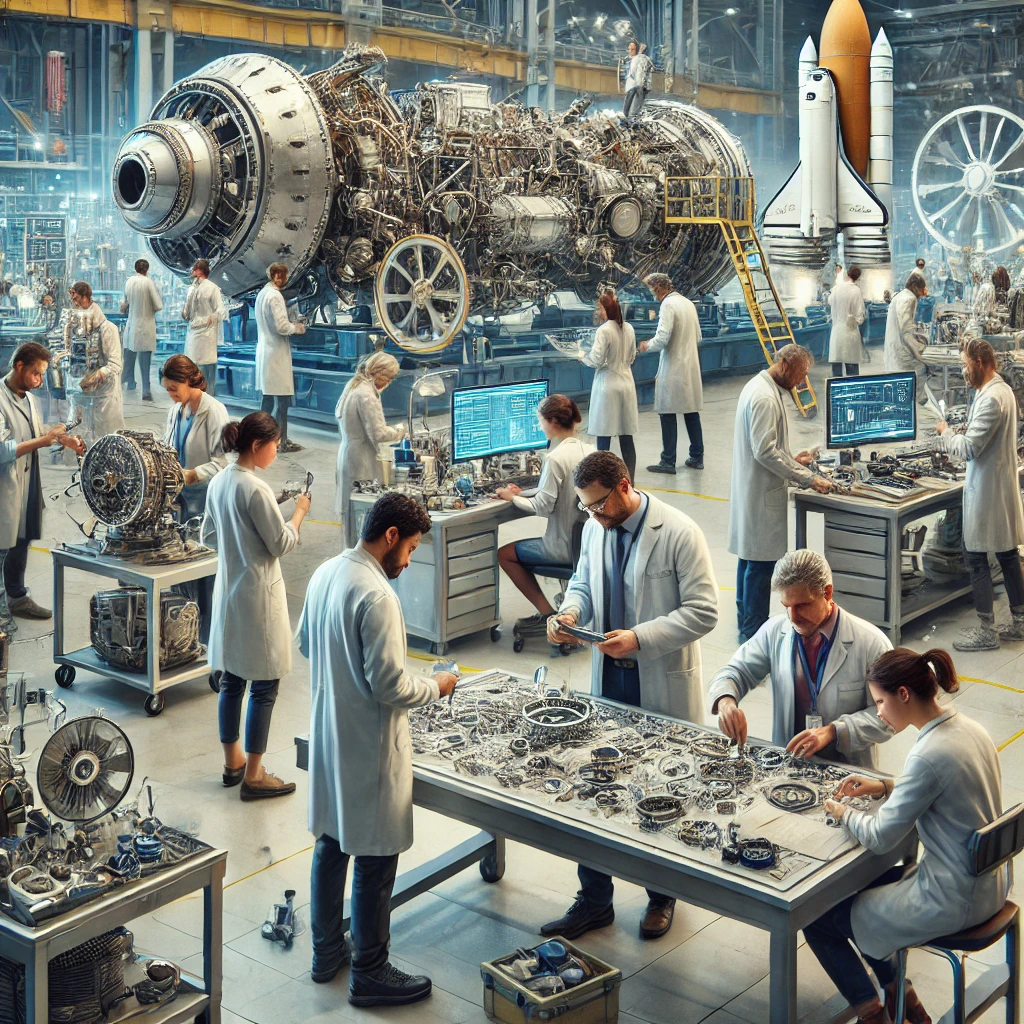
Perhaps the most profound impact of the NASA SpaceX launch partnership has been its inspiration to a new generation of scientists, engineers, and entrepreneurs. The dramatic imagery of rocket launches and landings, combined with the ambitious vision of human exploration beyond Earth, has captured public imagination and renewed interest in space careers. Educational institutions have reported increased enrollment in aerospace engineering and related fields, driven in part by students inspired by the visible achievements of the NASA SpaceX collaboration. The partnership has also demonstrated that space is no longer the exclusive domain of government agencies and traditional contractors, encouraging a diverse range of startups and new entrants to pursue innovative approaches to space technology and services. This democratization of space access has the potential to accelerate development of new capabilities and applications that could benefit humanity both in space and on Earth.
The scientific benefits of the partnership extend from Earth observation to fundamental physics and biology. The increased frequency and reduced cost of access to space have enabled more diverse research opportunities, including experiments conducted on the International Space Station and small satellites deployed from Dragon during its missions. These investigations contribute to our understanding of climate change, material properties, human physiology, and numerous other fields. Additionally, the technologies developed for the NASA SpaceX launch system have potential applications in terrestrial contexts, from advanced manufacturing techniques to energy storage and management. As the partnership continues to evolve and tackle increasingly ambitious challenges, the scientific and technological spillover effects are likely to grow, contributing to solutions for pressing problems on Earth while enabling new discoveries in space.
Conclusion
The NASA SpaceX launch partnership has fundamentally redefined the paradigm of space exploration through its innovative approach to technology development, operations, and collaboration between government and private industry. From the successful launch of Crew-10 to the ongoing development of next-generation vehicles like Starship, this relationship continues to deliver remarkable achievements that expand human capabilities in space while reducing costs and increasing reliability. The regular rotation of international crews to the International Space Station, now a routine operation thanks to this partnership, represents a stability in space operations that was difficult to imagine even a decade ago. As we look to the future, the foundation established through these collaborative efforts provides a solid platform for more ambitious endeavors, including lunar exploration under the Artemis program and eventual human missions to Mars.
The technologies pioneered through the NASA SpaceX launch system—reusable rockets, advanced spacecraft, integrated software systems—have applications that extend far beyond their immediate use cases. These innovations are influencing approaches to space transportation, habitat development, resource utilization, and numerous other aspects of humanity’s expansion into space. The economic model demonstrated by this partnership, with its emphasis on commercial services integrated with government requirements and oversight, offers a template for sustainable space development that balances public and private interests. This approach has already inspired similar programs in other countries and is likely to become increasingly prevalent as space activities continue to expand globally.
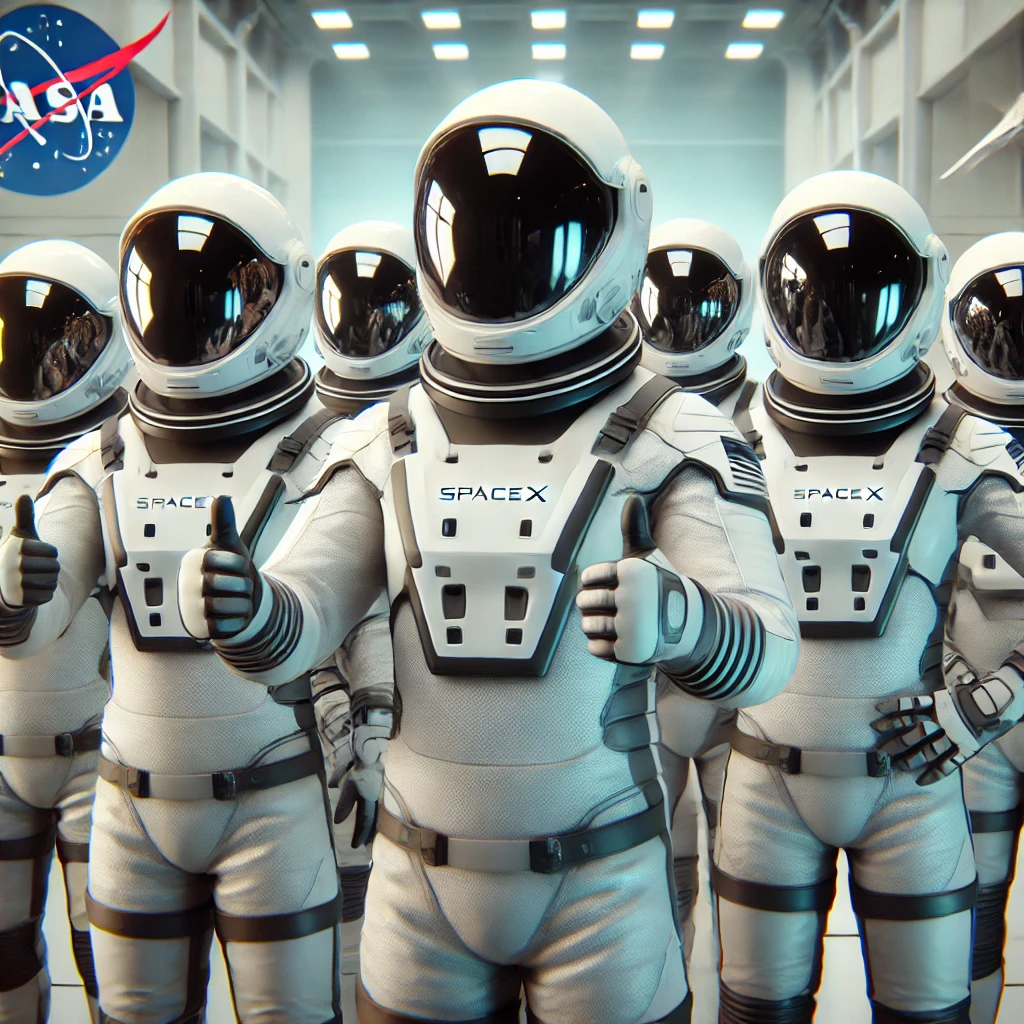
Perhaps most importantly, the NASA SpaceX launch partnership has rekindled public enthusiasm for space exploration by making it more accessible, visible, and relevant to everyday life. The regular launches, dramatic booster landings, and diverse crew of astronauts have created compelling narratives that connect with people around the world, regardless of their technical background or prior interest in space. This renewed engagement provides social and political support for continued investment in space exploration and development, creating a positive feedback loop that enables more ambitious projects. As humanity faces unprecedented challenges on Earth, from climate change to resource limitations, the inspiration and technological spinoffs from space exploration offer valuable contributions to potential solutions.
As we witness the ongoing evolution of the NASA SpaceX launch partnership, it becomes increasingly clear that we are in the early stages of a new era in space exploration—one characterized by collaboration between government and private entities, rapid technological innovation, and expanding access to space for diverse purposes and participants. The success of this partnership demonstrates that with vision, persistence, and innovative approaches, humanity can overcome the tremendous challenges inherent in space exploration and utilize the unique environment of space for scientific discovery, technological development, and eventually, expanding human presence beyond Earth. The journey that began with the Commercial Crew Program continues to unfold, with each successful mission building momentum toward a future where space activities are an integral and sustainable part of human civilization.
Read more at worldsinsight.







